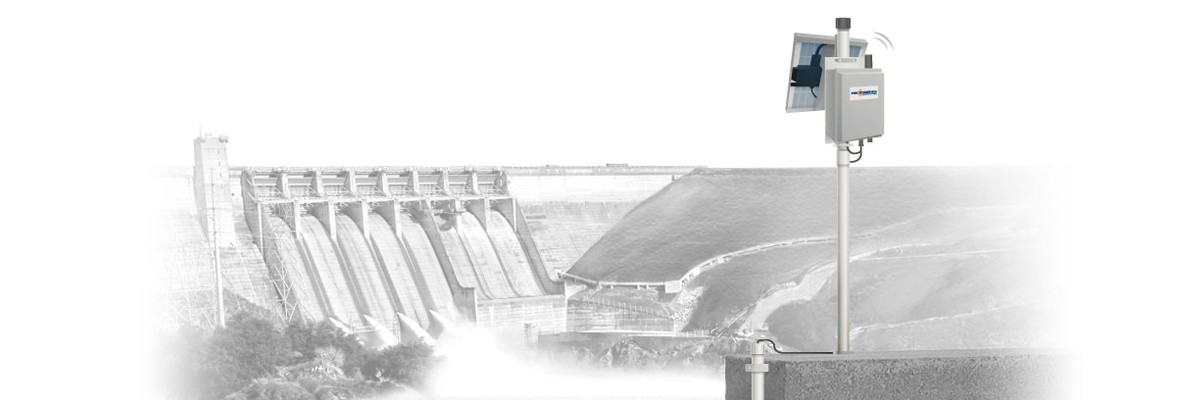Although there are many reasons to monitor dissolved oxygen in the field, one of the more critical applications for dissolved oxygen monitoring takes place at hydroelectric plants. There are approximately 2,500 hydropower facilities in the US today, generating around 7 percent of the electricity consumed by Americans. Every one of these facilities plays a crucial role in its watershed—providing a renewable source of power, but also serving as a flood control point and sometimes a source of drinking water.
Dams and other hydropower collection points also have the potential to disrupt everything around them, interfering with wildlife migration, water flow, and even water quality. Water that passes through a hydroelectric plant typically has less dissolved oxygen than other water in the ecosystem, so when it is released downstream, it is under-aerated.
This, in turn, triggers a drop in the oxygen content for the rest of the water in the river, which can be dangerous to downstream aquatic life. To ensure that dissolved oxygen levels stay similar below the dam, it’s important to use a dissolved oxygen monitoring system.
The importance of dissolved oxygen monitoring at hydroelectric plants
Aquatic organisms require dissolved oxygen to survive, but hydropower facilities can produce reduced dissolved oxygen levels downstream. For most freshwater species, dissolved oxygen levels of at least 5 mg/L are essential, and some species such as trout and salmon demand even more. Dropping DO levels cause aquatic life to flee the waterway or, when they can’t, die off.
Of course, dams aren’t the only cause of drops in dissolved oxygen concentrations. These levels can fluctuate naturally based on underwater photosynthesis, wind effects, and the respiration of organisms. However, the reductions caused by hydropower dams can be significantly more precipitous and sudden—and that makes them more of a threat to aquatic life and ecosystems.
Basic regulatory issues
Since hydroelectric power facilities can have such a dramatic effect on dissolved oxygen levels in watersheds, the Federal Energy Regulatory Commission (FERC) and various other agencies at the federal and state levels have created dissolved oxygen limits and reporting procedures for these kinds of facilities. these limits and reporting procedures aim to minimize the impacts of dams on local aquatic ecosystems while still allowing them to operate optimally.
Almost all hydropower facilities operating today that are not federally run must report to FERC. It is FERC who issues operating licenses for these facilities, although other federal and state agencies (such as the Environmental Protection Agency or EPA, for example) might issue detailed requirements and regulations that licensed facilities must adhere to. For example, state-level departments of natural resources can set specific requirements under the Clean Water Act for a facility’s Section 401(a) Water Quality Certification that may include monitoring and mitigation actions to be taken; these will usually be incorporated into the FERC licensing requirements for that facility.
Facility-specific rules set forth by a FERC license may include measurement standards (such as minimum dissolved oxygen levels), mitigation standards, flow standards, and narrative criteria (regarding aquatic life and habitat). These requirements change from state to state, and they might differ from facility to facility within the same state. Variations are based on the potential for harm to the ecosystem concerning a particular dam’s structure and the surrounding environment. It is mandatory for managers to report both deviation from and compliance with the set license criteria.
Facilities with FERC hydropower licenses do not typically get penalized for periods of non-compliance due to natural events such as weather, but these must still be corrected and reported. On the other hand, systematic or deliberate non-compliance may be met with a penalty.
The FERC also offers measures for mitigation when concentrations of dissolved oxygen drop too low. Monitoring for dissolved oxygen using state-of-the-art technologies allows facility managers to minimize the degradation of aquatic ecosystems by implementing the correct mitigation measures right away.
Many FERC licenses require monitoring for dissolved oxygen upstream, downstream, and within the reservoir. How often the monitoring must take place depends on the location and the facility, but near-continuous or continuous monitoring is ideal, especially for dams with deep impoundments.
Timely efforts to mitigate low dissolved oxygen levels surrounding hydropower facilities rely upon real-time availability of data. The ability to respond quickly when a problem arises—whenever sampling reveals it—is key to staying in compliance with FERC and minimizing the damage low dissolved oxygen can cause in the local ecosystem.
Dissolved oxygen monitoring technology
In the past, the time-consuming Winkler titration method, which is difficult to conduct in the field, has been considered the industry standard for dissolved oxygen measurements. However, dissolved oxygen sensors are now the better option, providing better accuracy and continuous readings. DO sensors can also be used for quality assurance and spot sampling, in addition to their deployment as part of real-time monitoring systems.
There are both electrochemical (galvanic, polarographic and rapid pulse) and optical dissolved oxygen sensors. In recent years many hydropower facilities have moved to the newer optical sensors as part of their dissolved oxygen monitoring system. These sensors offer low maintenance, long deployment life, and instantaneous monitoring of dissolved oxygen levels both above and below the dam.
Dissolved oxygen sensors are integrated with a solar powered data logger and provide real-time monitoring that can be transmitted to the cloud. The data is accessible on a PC, cellular phone or tablet, and viewed from virtually anywhere. Monitoring systems can provide the facilities with water quality data that can be acted on at a moment’s notice.
Tying it all together
Monitoring dissolved oxygen levels is a key task for any hydroelectric facility. Getting the DO data in real-time allows for a quick, responsive mitigation plan and a more effective solution to any problems arising from under-aerated water.
To learn more about dissolved oxygen monitoring, check out Environmental Measurements:Dissolved Oxygen


0 comments